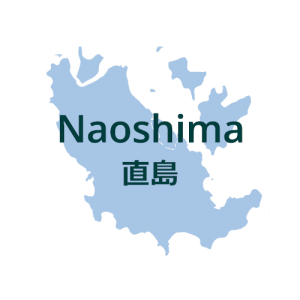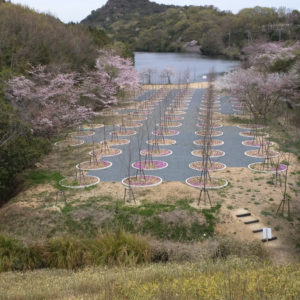Naoshima is where this idea of putting “art on islands” started in the late 1980s. Nowadays, the island is world-famous for its art sites and museums, which are collectively known as Benesse Art Site Naoshima. Nicknamed the art island online and elsewhere, it is really only half of the picture as most of Naoshima’s economy and activity is located in the northern part of the island which is heavily industrialized. Art sites, on the other hand, are concentrated in the southern part. It is the part that attracts visitors and the part we’re going to talk about here.
I have to warn you though, many guidebooks and people call the place “off the beaten path” but they must not have been there in a while. Nowadays, Naoshima welcomes close to a million visitors a year these days. The place is now world-famous and can be crowded at any time of the year. Plan accordingly.
- Land area: 7.82 sq km
- Circumference: 27.8 km
- Highest Point: Mt Jizo, 123 m
- Population : around 3,000 (around 1,500 homes)
Getting there
Naoshima has two ports where passenger ferries dock, Miyanoura on the west side and Honmura on the east side. You can reach the island from Takamatsu (Kagawa), Uno (Okayama), or Teshima (Kagawa). Large ferries only go to Miyanoura port and this is most likely where you’ll land on the island.
Getting around Naoshima
If you have a lot of time and are in good shape, walking is definitely an option. It takes about 30 minutes to walk between most of the areas where art can be found.
You can also rent electric bicycles (or non-electric ones, just know that the island is not all flat). Keep in mind that they’re rented out very quickly on a regular day. Cars can also be rented.
However, know that you can’t use either – or any other kind of vehicle – on the Benesse grounds (unless you’re a hotel guest), where some of the museums and art galleries are located.
There also are buses going around the island and to all the areas you may be interested in.
Art on Naoshima
As a rule of thumb, the first thing you need to know is that all artworks and art sites on Naoshima are closed on Mondays (with the exception of the Benesse House Museum).
However, they are open when a holiday falls on a Monday (in that case, they’ll be closed on the following regular day – usually the next day).
Most artworks are free for children and teenagers under 16.
Almost all of the artworks on Naoshima belong to the Fukutake Foundation or Benesse Holdings. They are collectively known as Benesse Art Site Naoshima. They’re all part of Art Setouchi and also take part in the Setouchi Triennale. If you’re a bit confused about the difference between all those terms (who wouldn’t be at first), I warmly advise you to read this article.
Legend:
- na01: The code above the name of the artwork is its official number during the Setouchi Triennale.
- B: Numbers followed by a B indicate that the artwork belongs to and is managed by Benesse Art Site Naoshima. It means that special rules sometimes apply, in particular, the Triennale Art Passport doesn’t always allow for free entrance.
: Permanent outdoor artworks that are usually free to access.
: Indoor artworks with limited access, and usually an entrance fee.
- For indoor artworks only:
: Pictures and videos are not allowed.
: Pictures are allowed but not videos.
: Pictures and videos are allowed.
: New artwork.
Opening Hours and Days may vary from what is listed below. Please check the official calendar.
Miyanoura
Miyanoura is Naoshima’s main village, where you’ll probably arrive first when getting off the ferry.
na01
Red Pumpkin
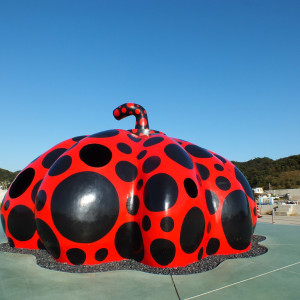
Yayoi Kusama (2006)
Outdoor art – free access
Review: I think I like it more than its famous yellow counterpart, if only because it’s more interactive and playful.
na04
Naoshima Pavilion
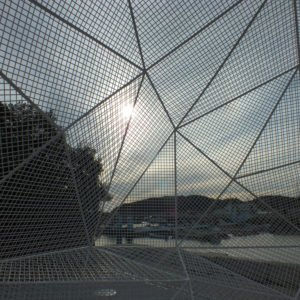
Sou Fujimoto (2015)
Outdoor art – free access
- Sou Fujimoto online: official site, Twitter, Instagram
Review: At first sight, from the distance, it doesn’t look like much. Get closer, spend time around it, walk inside, find the right angles and the right lighting and suddenly its beauty will appear to you.
na02
Marine Station “Naoshima”
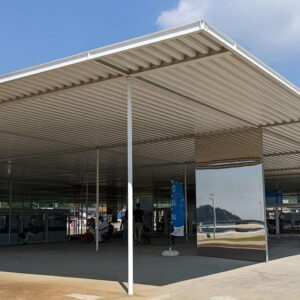
SANAA (Kazuyo Sejima & Ryue Nishizawa) (2003)
Outdoor architecture – free access
- SANAA online: official site
Review: Interesting building, but not the most fascinating thing you’ll see on the island. If you’re an architect you’ll probably find an interest that goes beyond its practical function as a terminal.
na05-B
Naoshima Bath – I ♥ 湯 (I love Yu)
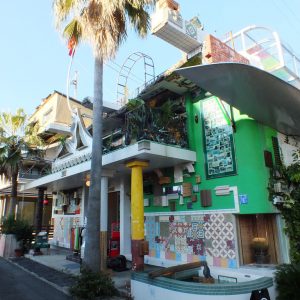
Shinro Ohtake (2009)
Open from 1 pm to 9 pm every day except Mondays
inside
- Admission: 660 yen for adults, 310 if you’re under 16
- Shinro Ohtake online: official site, Twitter
Review: I’ve never been inside, but the exterior is full of small details. You can literally spend hours trying to find them all. As often with Ohtake’s works, this accumulation creates an improbable and almost fractal reality. Sometimes it looks too messy, and sometimes it works. With Naoshima Bath, I think it works perfectly.
na03
Bunrakku Puppet
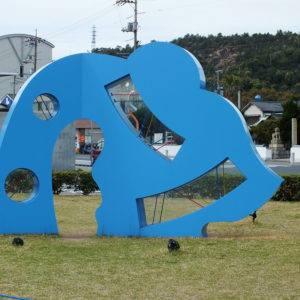
José de Guimarães
Outdoor art – free access
- José de Guimarães online: Instagram
Review: Meh. To tell you the truth, I had never really noticed it before it officially joined Art Setouchi. Apparently, it’s much more interesting at night as it’s lit and becomes colorful.
na06-B
Miyanoura Gallery 6 – Setouchi「 」 Archive
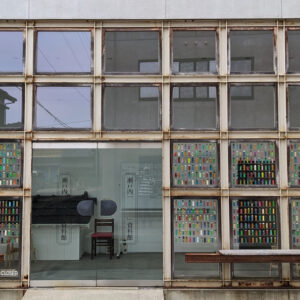
Curator: Motoyuki Shitamichi (since 2020)
Architect: Taira Nishizawa (2013)
Only open to the public occasionally until 2025.
inside
- Admission: 520 yen
- Motoyuki Shitamichi online: official site (in Japanese)
Review: Since 2020, Miyanoura Gallery 6 has a new curator – Motoyuki Shitamichi – and it is now the home of the Setouchi「 」 Archive project. The projects change with time but revolve around archiving Naoshima basically. Its history, its culture, etc. Unfortunately, you need to be able to read Japanese to fully enjoy it, but there are also some fascinating pictures of the Naoshima of yore.
Honmura
Honmura is a village located on the east coast of Naoshima. It is the most historical part of the island, as well as the one that tourists like to talk about when they mention the cute streets of the island.
na07-B
The Naoshima Plan “The Water”
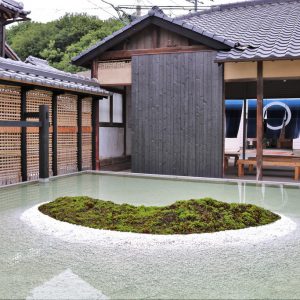
Hiroshi Sambuichi (2019)
Only open to the public occasionally until 2025.
- Admission: free
Review: A beautiful and wonderful building. Visits are especially advised in summer, as it’s the perfect place to cool down a little as you can soak your feet in the water. Bring your own towel (actually you can buy one on-site if needed).
na10-B
Ando Museum
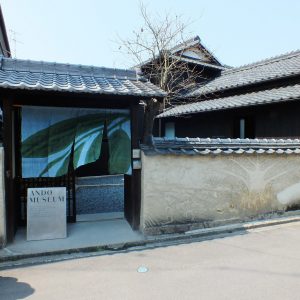
Tadao Ando (2013)
Open every day but Mondays, from 10 am to 4.30 pm (no admittance after 4 pm)
- Admission: 520 yen
- Tadao Ando online: official site
Review: The permanent exhibit is a retrospective of Tadao Ando’s works. The building itself is vaguely interesting. If you’re an Ando fan, you may have a different opinion, you have probably noticed that Ando’s works don’t usually speak that much to me.
na08
Naoshima Hall
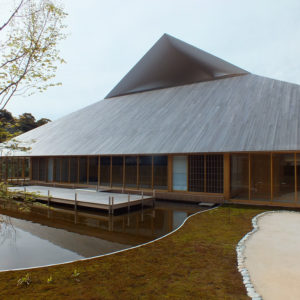
Hiroshi Sambuichi (2015)
Outdoor part – free access
- The indoor part is only open to the public for special events
Review: This building, like all of Sambuichi’s buildings, deserves to be visited for a certain number of reasons. Spend time around it, get inside if it’s open to the public on that day, and you’ll see how it’s one of the most interesting buildings on Naoshima. Beyond its appearance, partly contemporary, and partly traditional, the use of nature is what makes the building exceptional. In Naoshima Hall‘s case, the wind is used to naturally regulate the temperature. Tadao Ando may be the star of Naoshima, but in my opinion, Sambuichi makes more interesting buildings.
na09
Naoshima Port Terminal
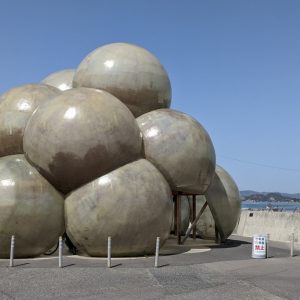
SANAA (Kazuyo Sejima and Ryue Nishizawa) (2017)
Outdoor art – free access
- SANAA online: official site
Review: I have to admit that I don’t have any strong feelings about it either way. The shape is amusing, but it feels unfinished somehow.
na17-B
Art House Project: Kinza – Being Given
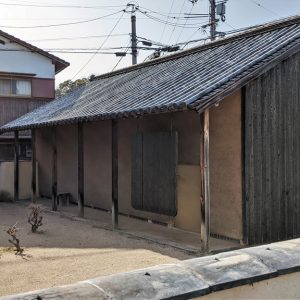
Rei Naito (2001)
Open Thursdays to Sundays, from 10 am to 4:30 pm (hours may vary depending on the seasons)
- You must make a reservation well in advance as only one person can visit at a time.
- Admission: 520 yen
Review: A very unique place that very few visitors to Naoshima get to experience. Having an artwork for yourself is unique in itself, but Kinza is also a meditative experience that connects to the Teshima Art Museum in a very interesting and subtle way.
Art House Project
na11-B Kadoya: Sea of Time 98, Naoshima’s Counter Window, Changing Landscape by Tatsuo Miyajima (1998, 1999)
na12-B Go’o Shrine: Appropriate Proportion by Hiroshi Sugimoto (2002)
na13-B Minamidera: Backside of the Moon by James Turrell (1999)
na14-B Gokaisho: by Yoshihiro Suda (2006)
na15-B Ishibashi: The Falls, The Garden of Ku by Hiroshi Senju (2006, 2009)
na16-B Haisha: Dreaming Tongue, Bokkon-Nozoki by Shinro Ohtake (2006)
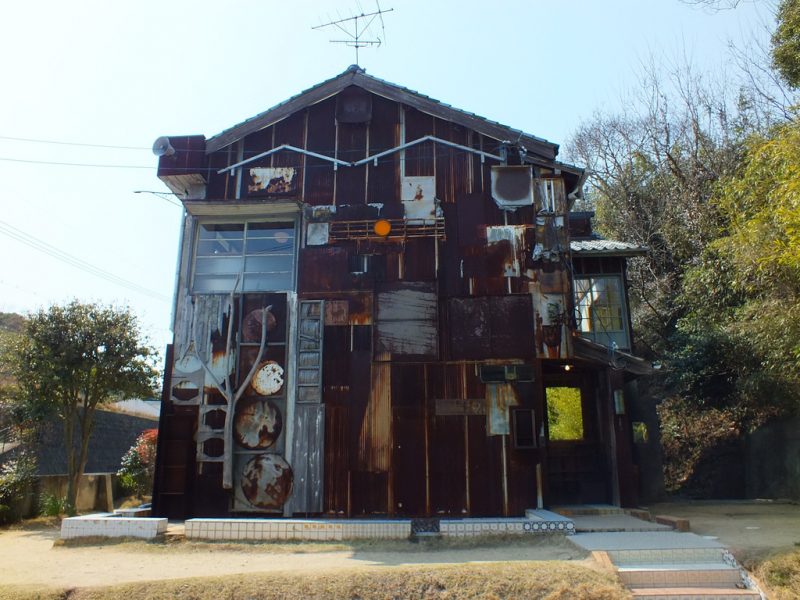
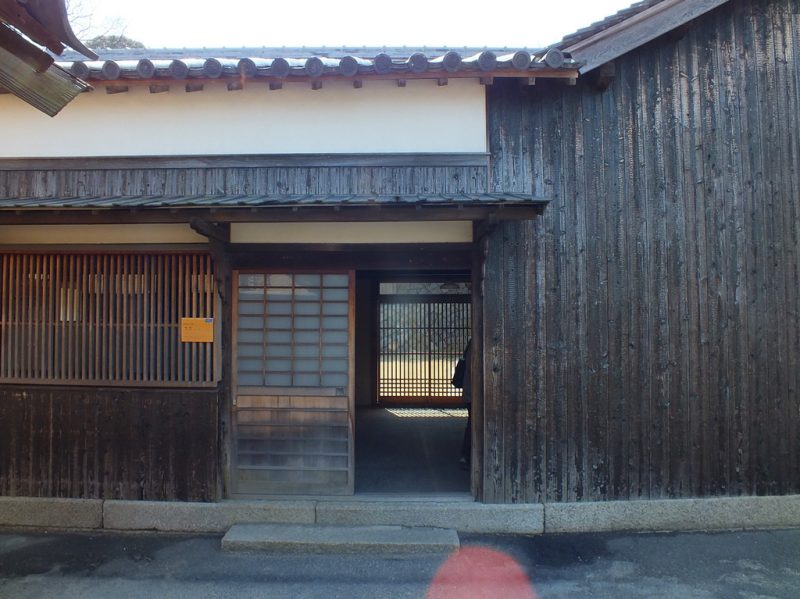
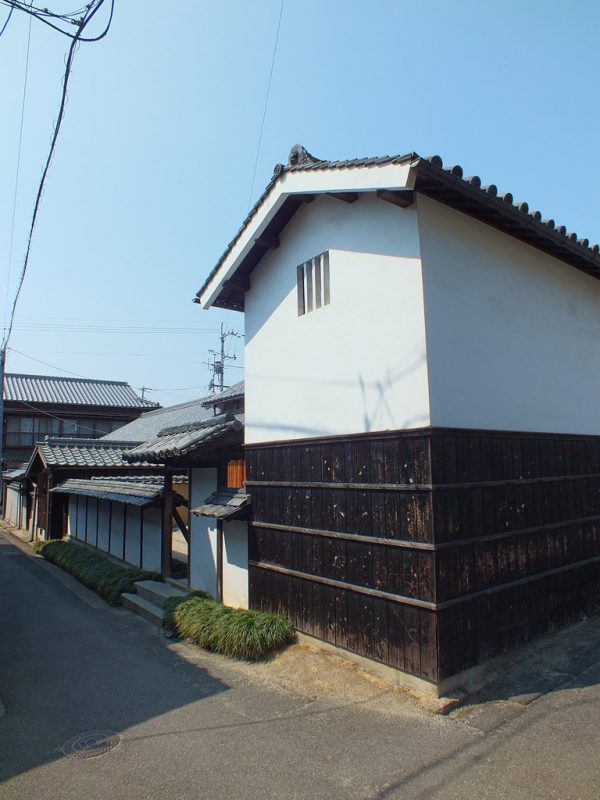
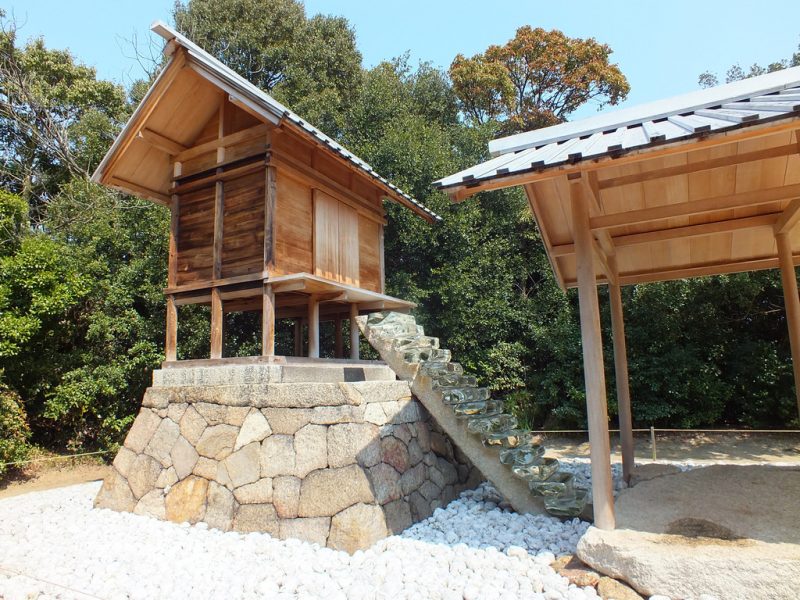
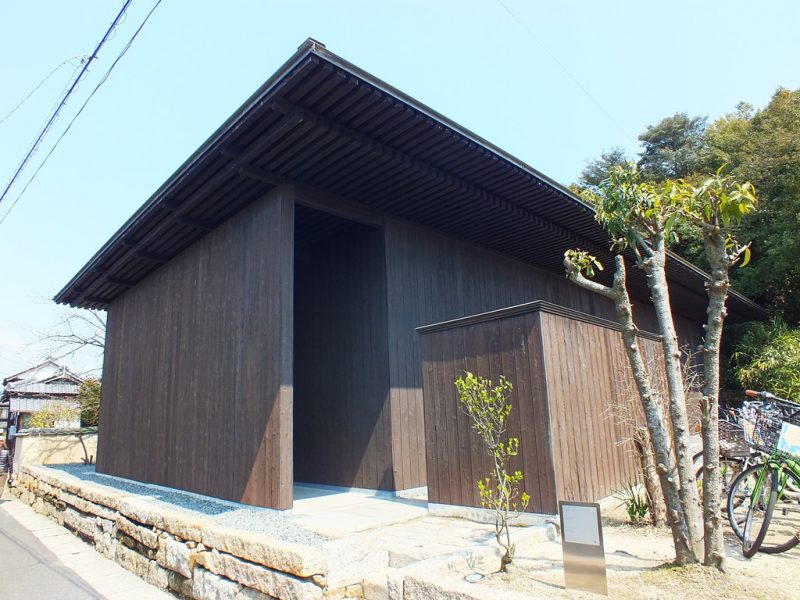
- Location: several locations in Honmura
Open every day but Mondays from 10 am to 4.30 pm (last admittance for Minamidera: 4.15 pm)
- Admission: Multi-site ticket: 1,050 yen (allows access to all sites but Kinza – tickets are for sale at various locations on the island, mainly at the Honmura Lounge & Archive). Admission for one house only: 420 yen
- On the site:
Review: It really depends on the houses. In my opinion, Minamidera, Go’o Shrine, and Ishibashi are unmissable.
If you’re short on time, you can easily skip Haisha (the outside is much more interesting than the inside).
You need to visit Gokaisho and Kadoya on days with little to no crowds to be able to fully enjoy them.
Benesse Art Site
na19-B
Benesse House Museum
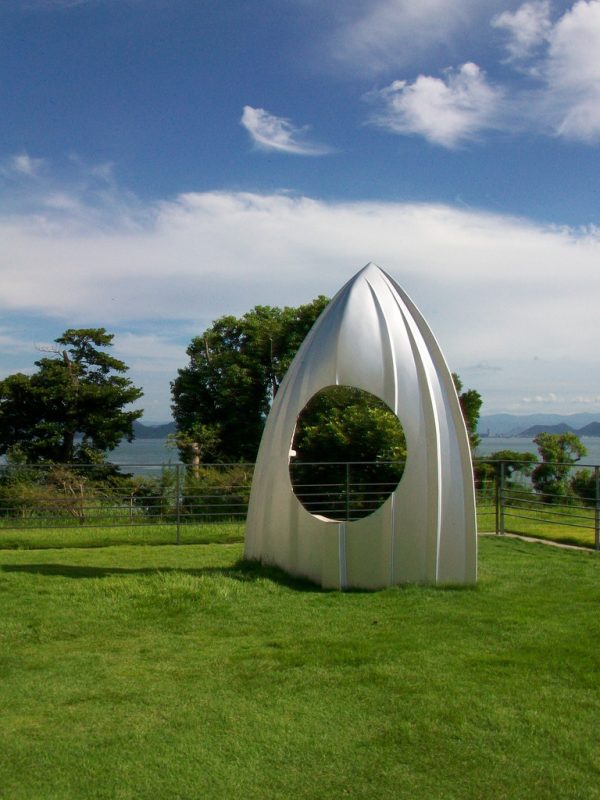
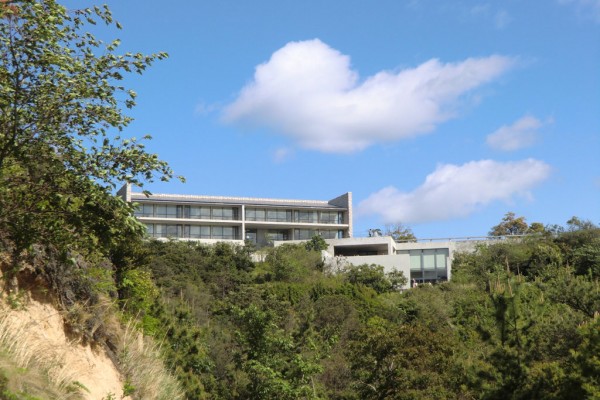
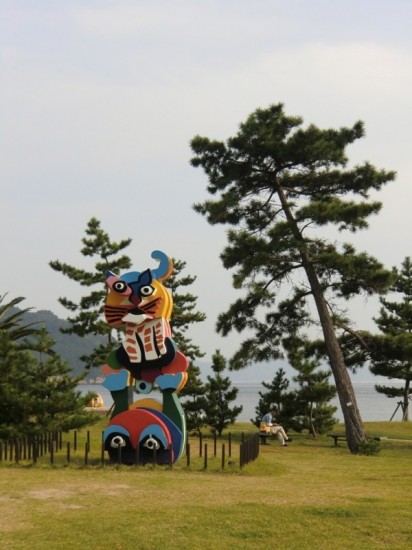
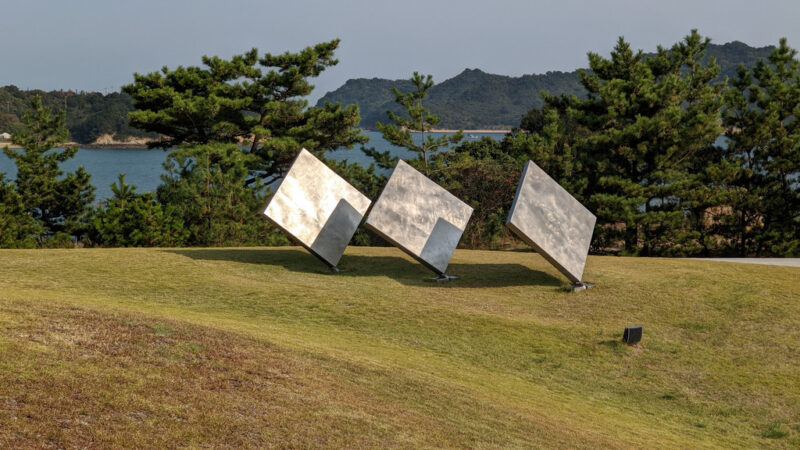
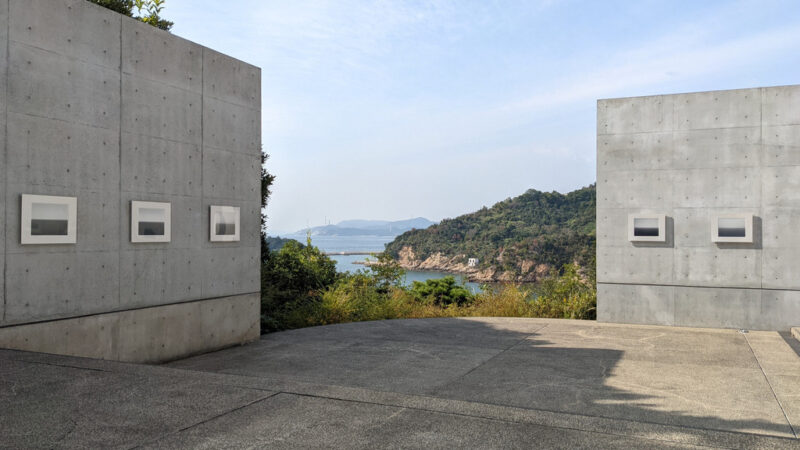
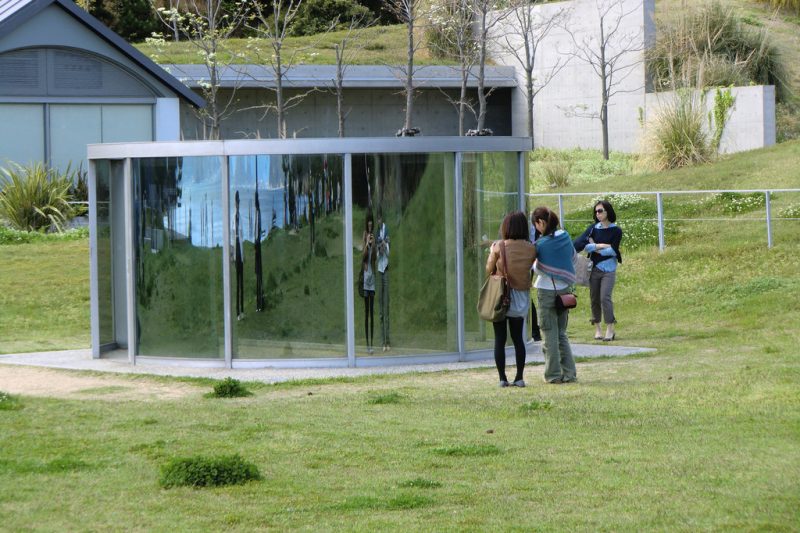
(1992, 2006)
Architect: Tadao Ando
Artists :
– inside the museum: Jennifer Bartlett, Jonathan Borofsky, César, John Chamberlain, Elmgreen & Dragset, Alberto Giacometti, David Hockney, Jannis Kounellis, Richard Long, Tatsuo Miyajima, Bruce Nauman, Shinro Ohtake, Park Seo-Bo, Jackson Pollock, Robert Rauschenberg, Gerhard Richter, Joel Shapiro, Yoshihiro Suda, Hiroshi Sugimoto, Wang Guangyi, Andy Warhol, Yukinori Yanagi, Kan Yasuda, Zhang Xiaogang. (note that some artworks come and go with time, so there is a chance that the list is not totally accurate)
– outdoor, around the museum, and on the beach: Karel Appel, Anthony Caro, Teresita Fernández, Antony Gormley, Dan Graham, Cai Guo-Qiang, Kazuo Katase, Walter de Maria, Kimiyo Mishima, Shinro Ohtake, Tsuyoshi Ozawa, Michelangelo Pistoletto, George Rickey, Niki de Saint Phalle, Thomas Ruff, Thomas Struth, Yoshihiro Suda, Hiroshi Sugimoto.
- Location: south coast of Naoshima
Open every day, even on Mondays, from 8 am to 9 pm (last admittance at 8 pm)
Outdoor works are always accessible
- Hotel guests can visit the museum after hours (see the museum for conditions)
- Admission: 1,050 yen (free for hotel guests)
- Benesse House Museum on Setouchi Explorer:
Review: Actually, I’m not a huge fan of the Benesse House Museum (yes, I know, it can come as a surprise). I don’t dislike it either, but to my eyes, it’s no different from pretty much any contemporary art museum, this one just happens to be located on a small island in the Seto Inland Sea and not in a major city.
On the other hand, I really love most of the outdoor works and the way they interact with their location (this time, the fact that they’re on a small island and not a big city matters).
Museum:
Outdoor artworks:
na20-B
Lee Ufan Museum
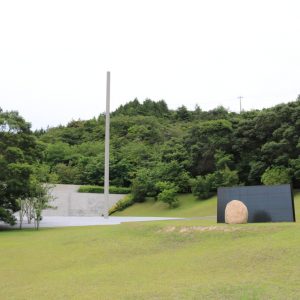
Lee Ufan & Tadao Ando (2010)
Open every but Mondays from 10 am to 5pm (October to February) or 6 pm (March to September)
- Admission: 1,050 yen
- Tadao Ando online: official site (in Japanese)
- Lee Ufan online: official site
Review: The building is quite interesting, however, Lee Ufan’s minimalist art is a hit or miss in my opinion (some artworks speak to me, some don’t).
na24-B
Hiroshi Sugimoto Gallery: Time Corridors
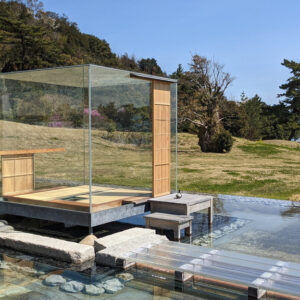
Architect: Tadao Ando
Art: Hiroshi Sugimoto
- Located inside the Benesse House Park Hotel
Open every day from 11 am to 3 pm (last admittance at 2 pm)
- You must make a reservation
- Admission: 1,500 yen (tea and sweets included)
Review: An interesting gallery if you like Sugimoto’s art. People who are not receptive to it may be a little bored. The glass tea house is worth seeing. Don’t expect to be able to use it or even enter it.
na21-B
Chichu Art Museum
Tadao Ando, Walter de Maria, Claude Monet, and James Turrell (2004)
Open every but Mondays from 10 am to 5pm (October to February) or 6 pm (March to September)
- You must make a reservation
- Admission: 2,100 yen
Review: A most amazing place. This unique museum was built with and around the artworks that it houses, the building basically being one of the artworks.
na25-B
Benesse House Museum Valley Gallery
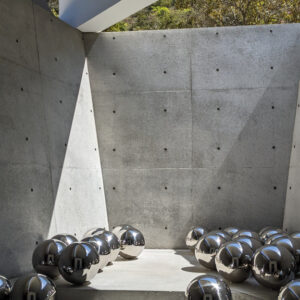
Architecture: Tadao Ando (2022)
Art:
– Narcissus Garden by Yayoi Kusama (1966)
– Slag Buddha 88 – Eighty-eight Buddha Statues Created Using Slag from Industrial Waste of Teshima by Tsuyoshi Ozawa (2006)
- Open every day from 9.30 am to 4 pm (Last admittance 3.30 pm)
- Admission: 1,300 yen (same ticket as the Benesse House Museum)
- Online: Tsuyoshi Ozawa’s website
Review: I’m not an Ando fan, but I find this building way more interesting than most of his creations. We’ll see if it’ll still be the case when the novelty has worn off. Or maybe it just works very well associated with this old installation by Yayoi Kusama. An installation that became infamous during the Venice Biennale more than 50 years ago. Yes, the two together work very well in my opinion. I’m also glad to see that Ozawa’s slag Buddhas are featured more prominently (they always were in that spot, but isolated and ignored by most visitors before). As surprising as it may seem, it’s one of the very few artworks on Naoshima that are inspired by the island and its unique history (both with Buddhism and slag).
na22
Labyrinth of Cherry Blossoms
Tadao Ando (2016)
Outdoor art, free access
- For obvious reasons, to really be able to enjoy the place, you should visit in April.
Review: I’m not a big fan. The name is misleading, it’s not a labyrinth at all (so do not expect anything of the sort or you’ll be disappointed), and gravel on the ground makes the place feels urban (a shame in this environment) and worst of all, it prevents any kind of hanami. I really don’t see what Ando tried to achieve here.
Sources: My own visits to the island (the picture are all mine), the various guidebooks of the various editions of the Setouchi Triennale. A big thanks to Andrew McCormick of Art Island Center for his feedback and input.
If you want to use any content from this page, please contact me first, and in any case, please mention your source (me) and link to this page. Thank you.
